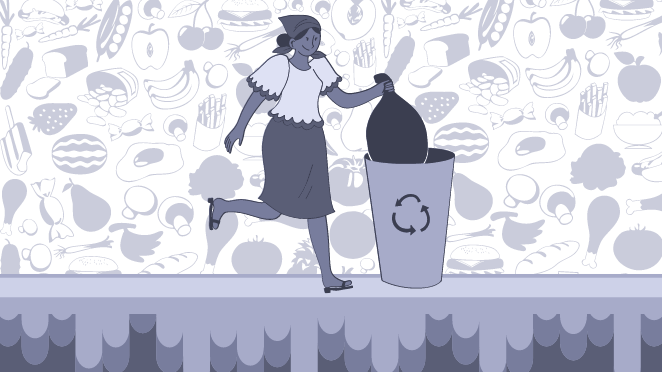Benefits of and Ways to reduce Food Waste
Every day, humanity pollutes the once beautiful world that was given to us. We continue to take advantage of the beauty that surrounds us and the nature that seems so unbreakable. We seem to forget that actions have consequences, especially our actions contributing to the decrease of the conditions and qualities of our lives and our planet. Every single day, the piles of garbage thrown out to the environment, the carbon dioxide and nitrogen oxides emitted by billions of vehicles, the toxic air enhanced by factories, and the billions of tons of food gone to waste, add up to be enough to destroy ourselves and our home planet. I would like to talk about one of the most important aspects regarding our environment, food waste, and why it’s important to reduce the food that we end up wasting.
Why is it important to quit wasting?
According to the Food and Agriculture Organization of the United Nations, 1.3 billion tons of food produced around the world get wasted. If it’s possible to save even 25% of that, there will be enough to feed about 870 million people.
The benefits of wasting food (not only to the environment but also ourselves!)
By quitting or reducing the amount of food we’re wasting, we're helping the reduction of methane emissions from landfills and lowering our carbon footprints. We help conserve energy and resources preventing pollution involved in the growing, manufacturing, transportation, and selling factors of production. Not only do we also save our money by buying less food, but we also support our community by providing donations of untouched food to those who may not have a steady supply. Reducing our food waste is a win-win for everyone!
How to stop food waste:
There are plenty of ways you can stop wasting food. First of all, you will need to adopt a healthier diet. You don’t need to buy piles and piles of snacks and junk food, especially if you’re not craving a portion of it.
Before you go to the grocery store, make sure to make a shopping list of all the items you are going to buy. This way, not only will you end up not buying eye-candy items that you didn’t originally intend to get, but you’ll save your money as well!
Make sure to always eat the leftovers piled up in your fridge and don’t cook something new every day unless you need to. Be careful though, as foods will rot and tend to become moldy or stale. A good plan to adopt is to eat leftovers of food the day after cooking the food.
Make sure you store vegetables and fruits the right way in the fridge, or they will ripen and become rotten early before you even have a chance to eat them. Also, when picking fruits and vegetables in a grocery store, you can pick the “ugly” ones, which are usually neglected by shoppers for their odd shapes and bruises. They tend to taste the same as the “pretty” ones. Oftentimes they are thrown away by the store since they don’t fit the cosmetic standards.
If you know that you're not going to be able to consume something, donate it. This way, you will be sharing food that would otherwise be wasted.
If you have leftovers you are not planning to eat any soon, rather than putting them in the fridge to rot, put them into the freezer. They will freeze, and you will be able to eat them even after a long time. Not too long though, for safety purposes.\
Make sure to eat the skin of poultry and produce food! Many people throw away the skin, not knowing that many of the nutrients and vitamins are located in the outer skin of the food. Eating them is not only beneficial for the environment, but to you too.
By blending fruits to make a nutritional smoothie, you will save much food going to waste. You will also treat yourself to a delicious snack.
Lastly, if you are going to have to waste the food, compost it by turning the waste into energy for plants.
Article Sources:
Image Sources:



